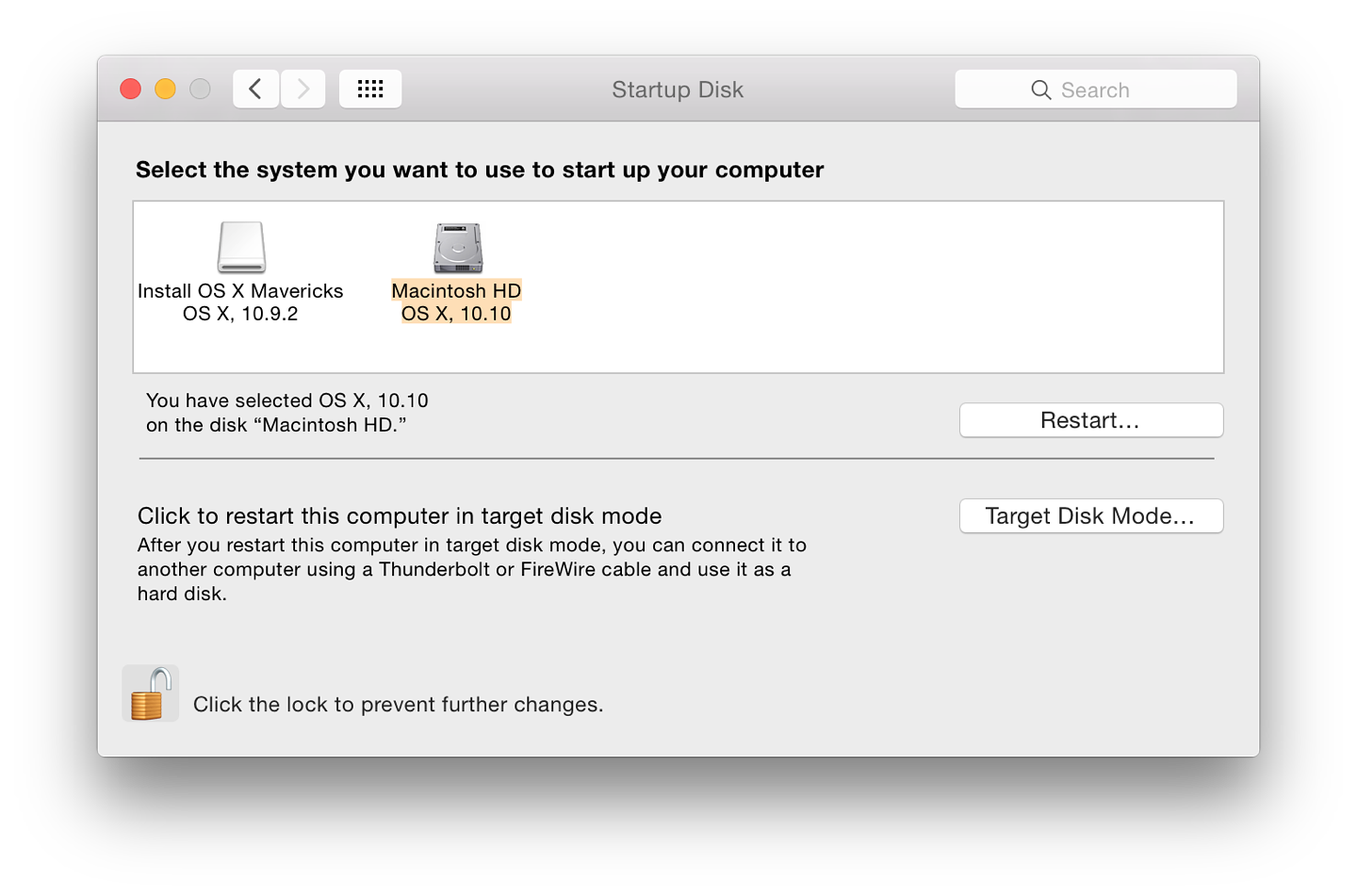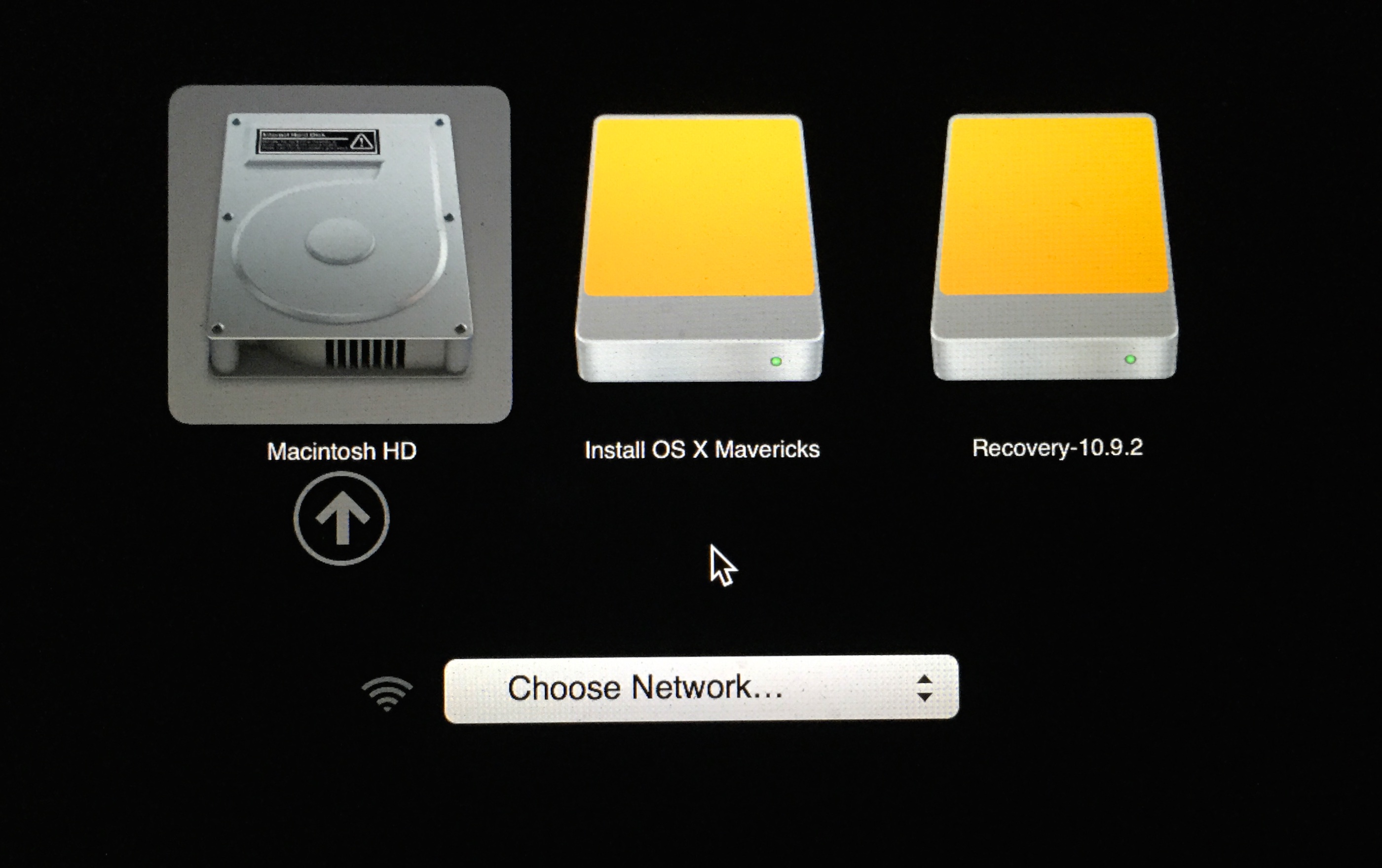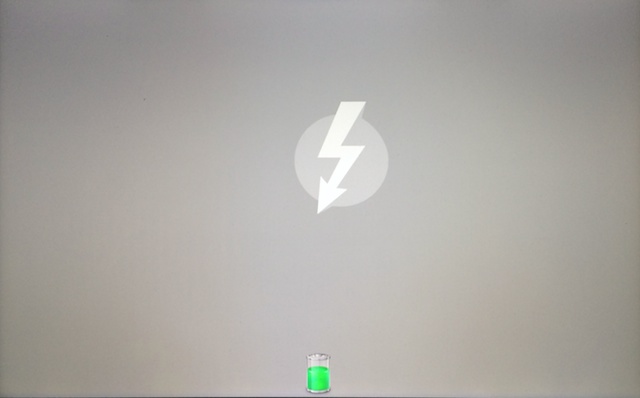System Preferences in OS X 10.10, Yosemite: Startup Disk

AMITIAE - Saturday 8 November 2014
|
System Preferences in OS X 10.10, Yosemite: Startup Disk |
 |
|
|
By Graham K. Rogers
Startup DisksThe Startup Disk preference panel has a single window in two parts. At the top are listed any disks or partitions that the system recognizes as available to start the computer in OS X. In a normal environment, one disk is shown. With earlier versions of OS X there were two icons: the current disk and a Network startup (no longer shown).

Startup Disk Preferences: 13" Retina display MacBook Pro Late 2013
If any other external disks with viable versions of OS X are connected, these will appear in the disks panel right away and may be selected. This includes optical disks on computers that still have suitable drives. In a User account, the preferences lock (bottom left) must be opened before a different disk can be selected. This will require use of the Admin name and password.
Highlighting the disk should be done when switching startup disks to ensure the correct disk is being used. It may be better for the disk to be highlighted in normal working to ensure that there are no delays on a restart. OS X is usually good at finding a bootable disk, but has been known to lose the plot.

Any disk with a usable operating system can be selected in this panel and the computer will restart from that. If the computer cannot be started in order to make such a selection, it may also be possible to find a bootable disk by restarting with the Option key pressed. I have more information on Startup Keys in an earlier article available online.

Target ModeThe bottom half of the Startup Disk panel is for access to Target Mode. This is a useful way to connect two Macs using a Firewire or Thunderbolt cable: one becoming the slave of the other. As newer Macs are able to use Thunderbolt connections, the panel instructions were changed to reflect this change in available equipment in Mountain Lion. There is a Thunderbolt to Firewire adapter cable available (US$29 or 1,090 baht) via the Apple Online Store.Target disk mode can help in diagnostics and repair. As an example I can run Disk Warrior on my MacBookPro to check and repair the disk on my iMac. It is also a method to transfer large quantities of data quite quickly. The computer will start in Target disk mode when the button (bottom right) is pressed. The target Mac should be connected to a (master) computer before using Target mode. Target mode may also be activated by starting a computer with the T key pressed. The screen on a Mac being used in Target mode will display a large icon while used in this way. With the older Macs this is a Firewire icon. The latest Macs show the Thunderbolt symbol when in Target mode.

See Also:
Graham K. Rogers teaches at the Faculty of Engineering, Mahidol University in Thailand where he is also Assistant Dean. He wrote in the Bangkok Post, Database supplement on IT subjects. For the last seven years of Database he wrote a column on Apple and Macs. |
|

For further information, e-mail to

|